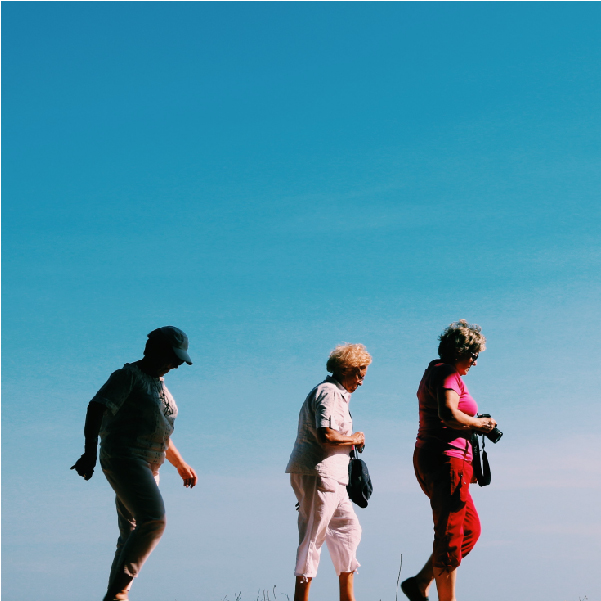East Melbourne VIC 3002
Localised Provoked Vulvodynia
Localised provoked vulvodynia is the term used to describe pain at penetration of the vagina.

What is localised provoked vulvodynia?
Localised provoked vulval pain is the term used to describe pain at penetration of the vagina. There is also marked tenderness around the vaginal opening during a pelvic examination. This condition occurs in women of all ages and it is thought that approximately 15% of women (1 in 7) will experience this type of pain some time in their lifetimes. Other terms used in the past to describe this pain include vulval vestibulitis syndrome, superficial dyspareunia and vestibulodynia.
What causes this condition?
While the cause is not known researchers have found that this painful tissue has increased nerve endings and signs of inflammation. There are theories that chronic inflammation from frequent yeast infections, hormonal changes, poor sexual arousal or chronic skin conditions may trigger the pain. It is therefore likely that there are a combination of factors involved in the cause of localised provoked vulvodynia. It may be that there are a normal number of nerve endings that just fire too often.
What are the symptoms?
Pain during vaginal penetration during sexual activity is the most common symptom experienced by most women with localised provoked vulvodynia. The pain is described as burning, searing, stinging, tearing, throbbing and occasionally itchy. Some women may experience pain for several hours or days after intercourse. Some women may also have pain when inserting a tampon or during a speculum examination during a routine gynaecological appointment.
What does this condition look like?
The appearance of the vulva can vary which each woman. Some women with localised provoked vulvodynia may have redness at the vaginal opening, however for most women the vulva and the vestibule look entirely normal.
How is this condition diagnosed?
Localised provoked vulvodynia is a clinical condition which means there are no laboratory tests or imaging studies to confirm the diagnosis. It is important that you see a specialist who is experienced in the diagnosis and management of vulval conditions such as Dr Kliman. By taking a medical and surgical history and performing a physical examination Dr Kliman can rule out other reasons for the pain. A physical examination may involve using a Q-tip (cotton tipped swab stick). This is where Dr Kliman gently touches different parts of the vestibule (posterior area of the vaginal opening) with a Q-tip to determine if and where you have the pain. Other tests that may be included are swabs to rule out infection or a biopsy under local anaesthetic to exclude other serious skin conditions.
What is the treatment for this condition?
It is important to minimise irritation to the vulva and vagina avoiding soap, detergents and scented products is recommended. Bland unscented oil based lubricants are best for sexual activity. Cotton underwear is best; synthetic fabrics and tight clothing against the vulva should be avoided. Lignocaine in the form of a liquid gel or ointment can provide relief when it is applied directly to the vestibule. This can be used before sexual activity as a way to reduce the pain.
Many different treatment options have been tried for localised provoked vulvodynia (LPV). Some women experience a great sense of relief just knowing that the pain they are experiencing is real and has a name. With a supportive team that may include a spouse or a partner, gynaecologist, physical therapist (physiotherapist), sex therapist, pain specialist, and psychologist, most women will eventually have improvement of their symptoms. Often, different treatment options are combined to maximize the benefit.
Since research supports that there may be changes in the nerve endings in this condition, some of the treatment options target the nervous system of the vulva. These are sometimes called “neuromodulators” or “chronic pain medicines”. Examples of these medicines include the oral tricyclic medications like amitriptyline, nortriptyline, imipramine, and desipramine. These medications are used in high doses as an anti-depressant, but they do not work in this way when they are used in smaller doses to treat pain problems. In the case of LPV, they are used to reduce the hypersensitivity of the nerve endings
Recent research has also looked into these medicines made into creams, then applied directly to the vestibule where the pain is occurring. Amitriptyline cream has been especially shown to be effective. More recently creams containing a drug called Ketamine have shown to be helpful.
Other therapies that have been studied for the treatment of vestibulodynia are physical therapy (physiotherapy), sexual therapy, psychological therapy, and surgery. Physical therapy means working directly with a therapist that specialises in rehabilitating the muscles of the pelvis. Many women with LPV experience sore, tight muscles of the pelvis which contribute to their distress. Learning to relax and work with these muscles can reduce pain. Tools that the physical therapist may use include vaginal massage, heat therapy, biofeedback, and dilator work. Each of these will be tailored to the special need of the patient.
There is also evidence that women who have LPV often suffer from sexual problems. This can include low desire (poor libido), difficult arousal (poor natural lubrication or wetness), and lack of orgasm. Many couples feel troubled by their sexual problems. Engaging in sexual counselling has been shown not only to help couples with intimacy, but often reduces pain. Finding ways to have sexual activity in a non-painful way is very important towards healing.
Finally, surgery is another option that has been studied for the treatment of vestibulodynia. This is performed by gynaecologists who specialise in vulvar conditions. The surgery, called a vestibulectomy, literally involves removing the superficial skin of the vestibule (painful skin), then advancing a piece of non-painful skin over the excised area. Surgical outcomes are best when it is coupled with both physical therapy and sexual therapy.
LPV is a challenging and difficult disorder for women and couples to manage. Many vulvar experts believe that there is no single treatment that will cure this disorder. Using a combination of treatments, incorporating physical therapy, sexual therapy, and direct treatment for the vestibule skin, is often the most successful in reducing pain. With this combined approach, most women will have significant improvement of their symptoms.
Discover pelvic inflammatory disease (PID) – its causes, sy…
Amenorrhea is the absence of periods
Uterine fibroids, otherwise known as myomas are the most co…
Vaginal discharge is a natural secretion that is produced t…
As with all areas of your body, there are obvious changes t…

Chat with one of our team.
Contact our clinic on 03 94192372 and one of our nursing staff will take your call and assist you with your enquiry.




